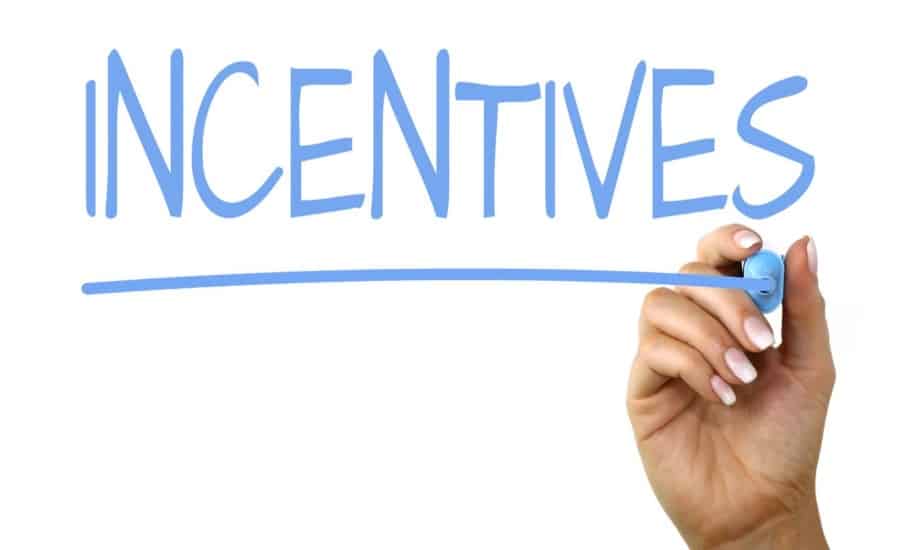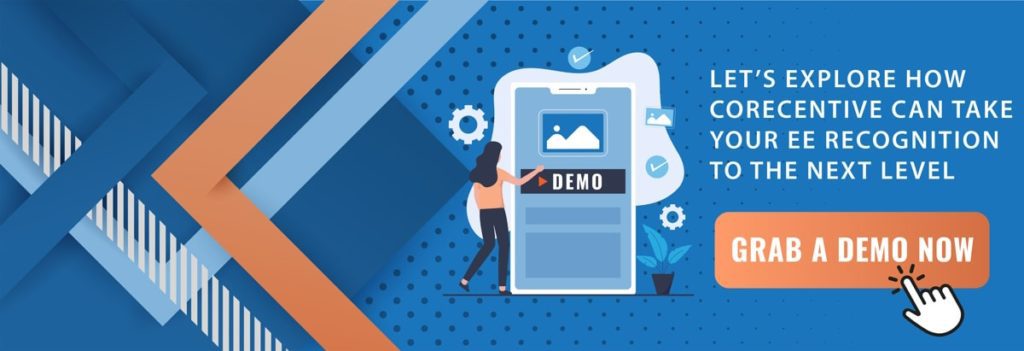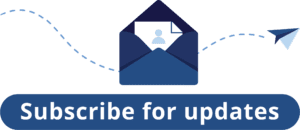Top 5 Tips for Creating a Superior Sales Incentives Program
Have your employee sales incentives programs fulfilled their potential for your organization and your sales team? If not, it is time to reassess how your technology is delivering the proverbial carrot for optimum performance. This time-honored, proven method of incentivizing behavior now has a modern twist that is enabling companies to streamline and improve their employee reward programs.
Your organization’s sales incentives program is a window into your future sales performance. However, designing a superlative employee incentives program requires a balance between an array of design options. In addition, you need an understanding of why some plans work in certain employment environments and not others.
How do you ascertain in advance which incentives are strong and which are weak? Should your organization invest in individual, group or relative incentives? Does using a long-term quota result in stronger sales performance?
Below are five specific tips to help you effectively design a powerful sales incentives program tailored to your organization, corporate culture and sales team. In addition, we will offer insights into why a sales incentives platform is now the best foundation for your employee recognition programs and how a superior platform helps you structure the delivery of rewards based upon the uniqueness of your organization and its professionals.
1. Configure Your Design Choices for Your Professionals
Designing channel incentives programs that empower outstanding performance takes a balance between your incentives options. Some choices will work well with your team; others will not.
- Strong versus weak incentives: Strong sales incentives, which offer larger bonuses and can be a significant percentage of a paycheck, work best with straightforward, well-defined objectives closely tied to measurable results that individual sales members can control. Weak incentives offer smaller rewards as an insignificant percentage of a paycheck and ultimately encourage your top performers to walk across the street to the competition.
- Individual, group or relative incentives: If your sales team is interdependent upon one another and they function as a group or team, then group-based incentives can promote better performance. However, if your sales team consists primarily of professionals who are rated individually, a team-based employee incentive program can act as a deterrent to better performance. Weaker sales reps may attempt to share the credit with star performers, or they could cause bias in sales results. You need to balance team and individual employee recognition awards accordingly for optimal performance. Relative employee recognition rewards can work when the marketability of a product may fluctuate in ways that your reps cannot influence.
- Long versus short goals: Shorter goals, such as monthly and quarterly objectives, can level fluctuations in revenue while allowing sales reps to adapt to outside influences. Longer periods will smooth out seasonal demand and volatility. Keep in mind that shorter goals can encourage some individuals to manipulate the system. For instance, a sales rep who has achieved the monthly goal may push out a potential deal into the next month.
2. Know What Motivates Your Employees
Typically, an organization succeeds in direct relation to the success of their employee incentives programs. However, what motivates one sales rep may turn off another. To successfully influence better performance, a robust employee recognition program should:
- Clearly define the varying roles within your sales team
- Customize the metrics and methods by which rewards are paid
- Compensate desired behavior with individualized rewards and incentives
- Provide real-time transparency to improve dependable feedback
You will have different personas to incentivize. Your farmers react differently than your hunters do. Reward each persona based upon their role. Incentivize your hunters to close on leads, and incentivize your farmers to nurture and up-sell.
Beyond sales personas and roles, every team member has individual motivations. Money may not always motivate members of Generation Y, who are typically more interested in career advancement, skill acquisition and purpose over paychecks. You may tailor training incentives for this group.
The more you understand what makes your sales reps perform their best and support them in these areas, the more your team will produce great results.
3. Set Accurate and Fair Sales Goals
One of the first things your sales team will ask about any new employee recognition rewards is, “What’s my sales goal to earn the reward?”
A vigorous sales quota system will provide:
- An achievable sales goal: This is a must, or you risk the perception that goals are in the “no win” range.
- An understanding of the potential of each defined territory: Sales goals should incorporate the actual potential of each territory. Sales reps should be able to meet and earn bonuses even in territories with weak prospects and demographics.
- Manager control: Your managers need some autonomy to adjust goals in response to major changes within specific territories. If an earthquake hits or a hurricane sweeps through, they must make changes. Economic changes can come from other issues: companies moving headquarters or filing for bankruptcy, for instance.
4. Choose the Right Metrics for Optimum Performance Results
When you measure with effective metrics, your managers can create an employee incentives plan that truly promotes superior performance. However, quality, rather than quantity, is crucial. Keep these elements in mind while you identify which metrics work best for your team:
- Focus on the bottom line: All else springs from this one metric: units out the door, market penetration, cash in and the final balance sheet.
- Be selective: Choose three to four of the strongest sales performance metrics. Choosing too many will dilute the message and make it difficult for your team members to focus on the activities producing the best results.
- Bring the entire team into the decision-making process: When your team has input into the metrics used to gauge their performance, their buy-in and commitment will be much greater.
- Transparency and control: Select metrics that give your team members control over their results. When possible, provide them with real-time insight into their performance.
5. Test Plan Changes Prior to Implementation
Would you float a new product without testing the marketplace and the products first? Of course not. The same is true for your employee recognition program. A strong sales incentives program should do the following:
- Test all elements of your new incentives program. Rather than focus on a specific aspect of the program, test the entire plan.
- Test the plan elements as you create them. This gives you the option to make changes prior to deployment.
- Test the model outside the production environment. This will allow you to make adjustments without disrupting your operations.
You can utilize a stand-alone modeling tool. However, you may find it more beneficial and straightforward to use a tool that is built for the compensation process. Some of these tools show far greater results than spreadsheets.
Adopting a Platform Strategy for Employee Incentives Programs
Most of us think of businesses as competing over products and services. However, in this digital, networked world, the competition is increasing for proficient platforms and skilled workers. Use a superior platform, and the skilled workers will walk over to your company instead of the competition.
In many regards, this is true. However, it is the foundation the platform provides for delivering an optimized, individualized employee rewards program that makes the difference.
In the construction industry, a platform is a thing that lifts up and people can stand upon for support. This is true in sales as well. By adopting a digital platform dedicated to creating the best channel incentives program for your company, your sales reps have the foundation of incentives that direct their best sales performance.
Your Sales Incentives Platform Must Add Value
Your challenge is to stay abreast of the most innovative technology platforms to create value in your employee recognition programs. Consider smartphones. Blackberry and Nokia were eclipsed when new ideas flooded the marketplace. As Android and Apple ecosystems surpassed older smartphones, the value came from the apps that developers created for the platforms. Your incentives platforms should add value to your programs to ensure success.
The growth in online platforms comes from three modern technologies: social, cloud and mobile. Social networks connect people worldwide and enable them to maintain their online identity, and the cloud provides a global infrastructure that allows anyone to create applications and content for a worldwide audience, and mobile technology allows anyone to connect to the infrastructure whenever they wish.
Why You Need Online Incentives Platforms in Today’s Marketplace
1. Better Organized Solutions
Technology gives you the ability to decide which sales data is captured, how it is collected and how it is analyzed. It enables your sales team to remain up-to-date on their own sales activities online with supporting proof. This helps your company achieve its goals, fulfill its incentives and receive valuable insights into the specific drivers behind your profits.
2. Audience Segmentation
A successful sales incentives program targets the right people and desired outcomes. This means you need the ability to quickly and easily segment your audience by team, role, location or function. An online sales incentives platform should dynamically segment your audience as you desire. In addition, each user sees only the data, messages and other content that is relevant to them. This motivates your team members to engage more with your sales incentives.
3. The Impact of Gamification
According to McKinsey, 70 percent of organizational transformations fail from lack of engagement. This is just as true for sales incentives. As a result, gamification has surfaced recently as a powerful method to improve engagement not only in the workplace but also in other business initiatives.
Gamification utilizes the psychological behaviors that drive daily decision-making. It uses components of task completion, competition, improvement and engagement. Gamification leverages good old-fashioned fun, which works well in a sales environment.
Platform technology makes it easier to use gamification and game options in your sales incentives programs.
4. The Importance of Mobile
Smartphone usage is ubiquitous. Nearly everyone now uses a smartphone for everything from social media and banking to shopping and email.
Mobile technology ensures the success of your sales incentives programs by ensuring that your team has access regardless of location or time of day. Sales reps are frequently on the road, not in the office. If they aren’t traveling, they still remain up-to-date via their smartphone during their daily commute. Mobile technology easily connects your team to their employee rewards while making communication simpler.
5. One Centralized View
An online sales incentives platform provides you with dynamic tools like leaderboards and a dashboard, making the reporting of metrics easier and transparent. Not only can you assess the impact of your incentives, but you will also engage and motivate your sales reps to stay abreast of their performance at all times.
6. Responsive, Flexible Incentives
Using platform technology provides you with more flexibility, making your incentives responsive to performance. For instance, you can quickly initiate a product promotion tied to a defined time frame as the market changes. You create and implement incentives programs that have the greatest impact at the right time.
7. Testing Learning and Knowledge
Finally, a sales incentives platform gives you a viable, objective method to test product knowledge. Additionally, you can offer in-depth sales and product training via the platform. Integrating online learning modules into the employee reward program lets you verify that key product knowledge and sales information is understood and utilized.
You may be using technology to promote your employee reward program, but are you using an advanced platform that delivers and personalizes those incentives? Getting started with an online sales incentives program may be more cost-effective than you might think. It is a highly efficient method to maximize your opportunities.


